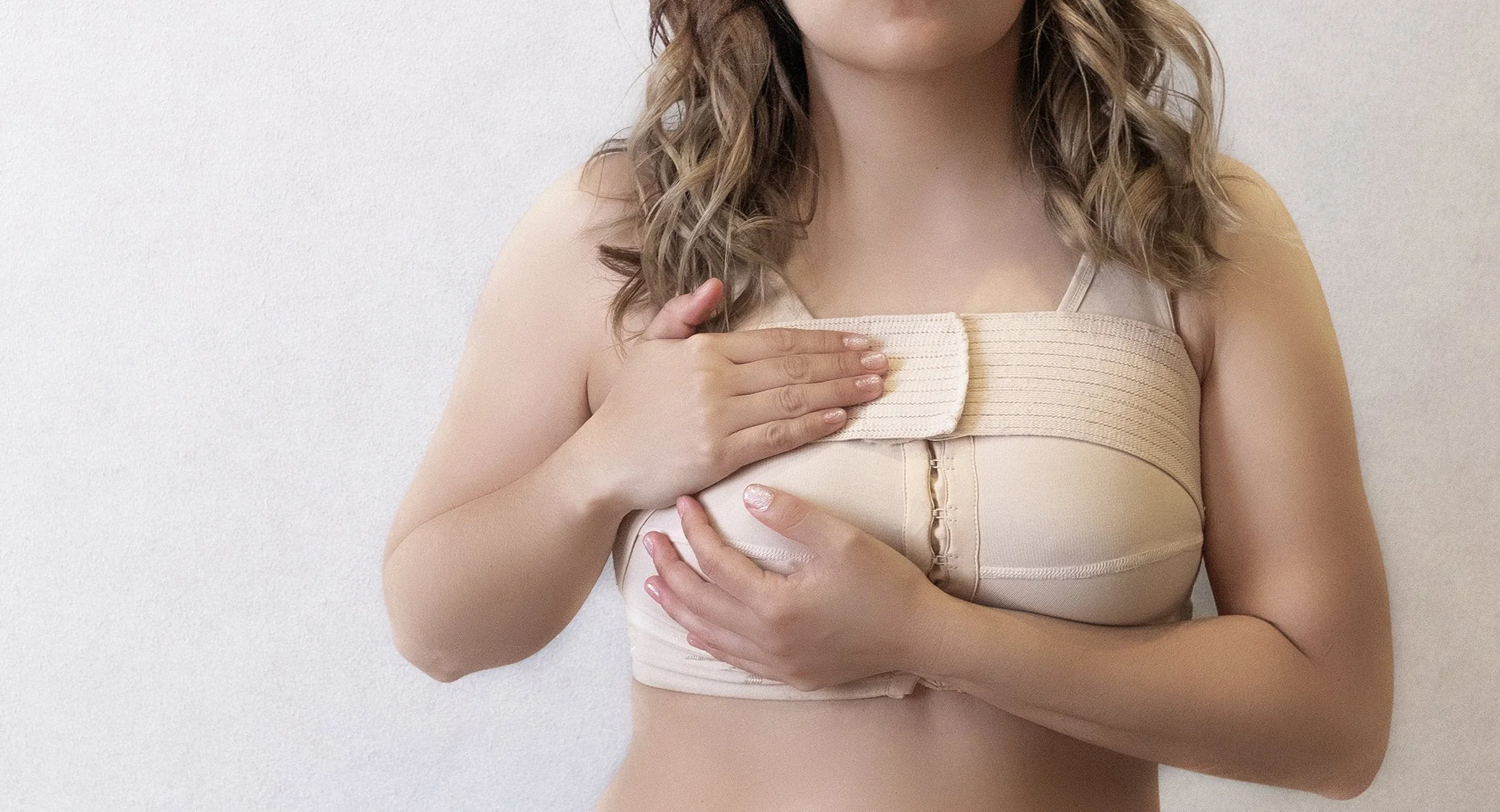
The first night feels longer than expected, even with medication
You wake up groggy. Disoriented. Wrapped tight in bandages. There’s pressure, not sharp pain. Moving feels unfamiliar. You try to sit upright. That takes effort. Every breath feels deeper than you remember. The body doesn’t know what just happened—only that something changed.
You’re sent home the same day, usually. With instructions. No lifting. No reaching. No driving. Medications are written out. Painkillers. Antibiotics. Maybe a stool softener. Rest is the only job, but it doesn’t feel restful. It feels like waiting. And adjusting.
The first night passes slowly. You try to sleep on your back. You try not to panic. This is normal.
Swelling comes fast, but bruising takes its time
Within a day or two, swelling sets in. The chest feels heavier. Tighter. It’s not pain—it’s fullness. The skin stretches around it. Breathing shifts slightly. Your posture changes without thinking. Shoulders roll forward. Arms stay still. Movement becomes calculated.
Bruising isn’t always immediate. It shows up on day three. Or five. Or later. Yellow. Purple. Sometimes green. Not always on the breast. Sometimes under the arm. Down the ribs. Into the abdomen.
It looks dramatic. It feels dramatic. But most of it fades quietly—without needing anything except time.
Showering becomes more about logistics than hygiene
You ask when you can shower. The answer depends on the surgeon. Sometimes day two. Sometimes longer. The first one feels like a mission. You walk differently. Hold your arms close. Stand still under the water.
The water feels strange on numb skin. Temperature is harder to gauge. You use mild soap. You avoid scrubbing. You don’t dry like before. You pat. You press gently. Every move is slow. Careful.
Showering becomes less about getting clean—and more about managing sensation.
Compression garments aren’t comfortable—but they’re necessary
You’re told to wear them around the clock. Day and night. The first few days are the worst. The garment presses where everything already feels swollen. It leaves marks. It rolls. But it supports.
It keeps swelling down. Helps skin stick to new contours. Prevents fluid from building. It’s not optional. It’s part of recovery. You’ll wear it for weeks. Maybe longer. And just when you get used to it—it’s time to stop.
The body adjusts to what it’s given, even when comfort comes second.
Sleeping on your back becomes both habit and burden
No side sleeping. No stomach. You prop yourself up with pillows. Maybe a wedge. You wake up sore. Not from the surgery—but from the position. Your lower back aches. Your neck stiffens.
You miss turning freely. Curling. Shifting. You learn to sleep lighter. To wake more often. But sleep still happens—just differently.
This part doesn’t last forever. But while it does, it becomes its own challenge.
Emotional waves show up without warning
The first week feels physical. After that, emotion catches up. Some cry without knowing why. Others feel detached. Regret sneaks in—even when results are good.
Your body feels different. So does your reflection. You recognize yourself, but not fully. That’s normal. The brain adjusts slowly.
Some feel relief. Others feel loss. You might go from proud to unsure in one day. No reaction is wrong. But all of them are real.
Numbness can last longer than pain
Pain fades quickly for most. But numbness lingers. Under the nipple. Along the incision. Across the side of the breast. Sometimes for months. Sometimes longer.
It feels odd. Like touching someone else’s skin. Like a spot asleep. You’re told it might come back. It might not. That’s part of the deal.
You learn to stop checking every day. To live with what’s new, even when it’s not what you expected.
Follow-up appointments feel more reassuring than clinical
You go in with questions. About swelling. About shape. About when the bruising will fade. Your surgeon checks everything. Lifts the garment. Presses gently. Explains what’s healing and what’s still settling.
You’re told it looks good—even when it doesn’t feel that way. You’re told to wait longer. That shape takes time. That tightness isn’t permanent.
You leave feeling less worried. Not because everything is fixed—but because you’re seen.
Scar care starts when healing allows it
You don’t begin scar treatment right away. First, the incision must close. The scab must fall. The skin must settle. Then you start. Silicone sheets. Scar creams. Massage. Sometimes nothing.
You learn which products work for you. Which don’t. Which feel too greasy. Which don’t stick. Scar care is slow. Progress feels invisible. But over months, you start to see the difference.
The scar doesn’t disappear. But it softens. And with time, it matters less.
Final results take longer than you want them to
At one month, things still look strange. At three months, swelling lingers. At six months, the shape evens out. The incision fades slightly. You feel closer to where you imagined.
But full healing can take a year. Or longer. Especially with lifts. Or revisions. Or radiation history. Time is the quietest part of healing—and the most frustrating.
You want to love the result early. But often, you don’t. That doesn’t mean it’s wrong. Just incomplete.
